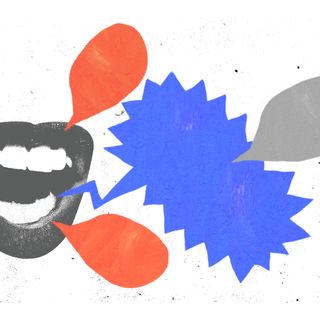
Self‑Harm Behavior Online Is Linked to Rise in Suicidal Thoughts: Study
Digital self-harm is when people post cruel or unwanted content about, or engage in cyberbullying with, their own selves.

The internet is a modern miracle that has made communication easier, and also benefitted several groups of people struggling with physical communication. The comfort of anonymity that the internet provides also helps those uncomfortable with sharing their identity and data in the public domain. However, as it happens with most good things, this anonymity can be misused for phishing and other financial scams. A bigger, and far more dangerous misuse of online anonymity, though, is its facilitation of online bullying and harassment.
In the recent past, researchers have observed that this sort of online bullying may not just be carried out against others, but against the self as well. This phenomenon, of one targetting one’s own self to anonymous hate or cyberbullying, is called “digital self-harm.” Now, a new study publishedin the journal Child and Adolescent Mental Health, has found a link between digital self-harm and suicidal thoughts among pre-teen and teenage adolescents.
There may be several reasons behind people engaging in digital self-harm —including a desire to attract attention from peers and adults, gaining sympathy and support from others in their daily struggles, getting others to validate their insecurities, showing they’re strong by displaying their ability to “take it,” and at times, also starting a fight.
Recent data indicate that the occurrence of suicidal thoughts and suicidal ideation among the youth has increased substantially in recent years, and that coming across self-harm content online may further trigger suicidal thoughts and behaviors in young people.
Some studies in the field have suggested links between the use of social media and declining mental health. However, there haven’t been any specific studies on the impact of digital self-harm on the mental health of the youth. This acted as a motivation for this current research.
Related on The Swaddle:
Why People Live‑Stream Their Suicides
For their study, the researchers carried out digital surveys of close to 5,000 middle-and-high-school-going students in the U.S. Questions in these surveys asked respondents whether they had ever engaged in digital self-harm, whether they struggled with suicidal thoughts in the last year, and if they had attempted to die by suicide in the past year. Once these responses were collected, the data was analyzed using statistical regression models.
On interpreting the data, the scientists found that close to 9% of adolescent respondents reported posting cruel and unwanted content about themselves on social media. About 8% reported experiencing suicidal thoughts, and 5.3% admitted to having attempted suicide in the past year. Further, the data suggested that those engaging in digital self-harm were significantly more likely to struggle with suicidal thoughts, and attempt to die by suicide.
These numbers indicate a strong link between digital self-harm and suicidal thoughts and behaviors among the young online population. “It is clear that those youth who participate in digital self-harm are much more likely to think about or attempt suicide when compared to peers who do not engage in digital self-harm,” Dr. Sameer Hinduja, a researcher who looks into criminal justice and cyberbullying, and one of the authors of the study, said in a press release.
Interestingly, the researchers also noted a higher incidence of engaging in digital self-harm among students who identified as non-heterosexual. Non-heterosexual adolescents were also twice as likely to have attempted suicide, and almost six times as likely to report suicidal ideation, compared to heterosexual children.
The researchers cautioned, though, that the study merely suggests a correlation –and not causation — between digital self-harm and suicidal ideation. Moreover, as the study relies solely on the personal recollections of the respondents, there is also the possibility of some of them recalling incorrect information. Memory can be an unreliable source, and there’s no way to determine whether people may have willingly provided false information either.
However, despite these caveats, the research is significant in being the first ever to look into relations between digital self-harm and suicidal ideation among youth. With more detailed studies in the field, researchers and mental health practitioners might be able to come up with clearer ideas on the impact of digital self-harm on the mental health of adolescents.
If you are experiencing suicidal thoughts, please know that you are not alone. If you are in danger of acting on suicidal thoughts, call Sneha, a 24-hour hotline at +91 044 2464 0050 / +91 044 2464 0060. If you are depressed and dealing with thoughts of suicide, iCall is also available Monday through Saturday, 8 a.m. to 10 p.m., at +91 022 2552 1111.
Amlan Sarkar is a staff writer at TheSwaddle. He writes about the intersection between pop culture and politics. You can reach him on Instagram @amlansarkr.
Related


Why Verbal Insults Feel Like ‘Mini’ Slaps, According to a Study
